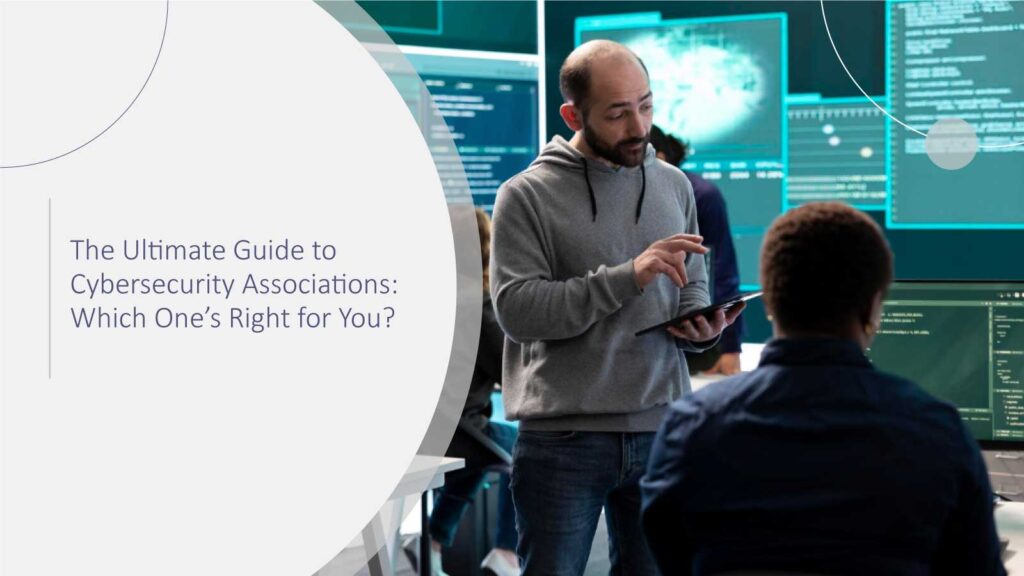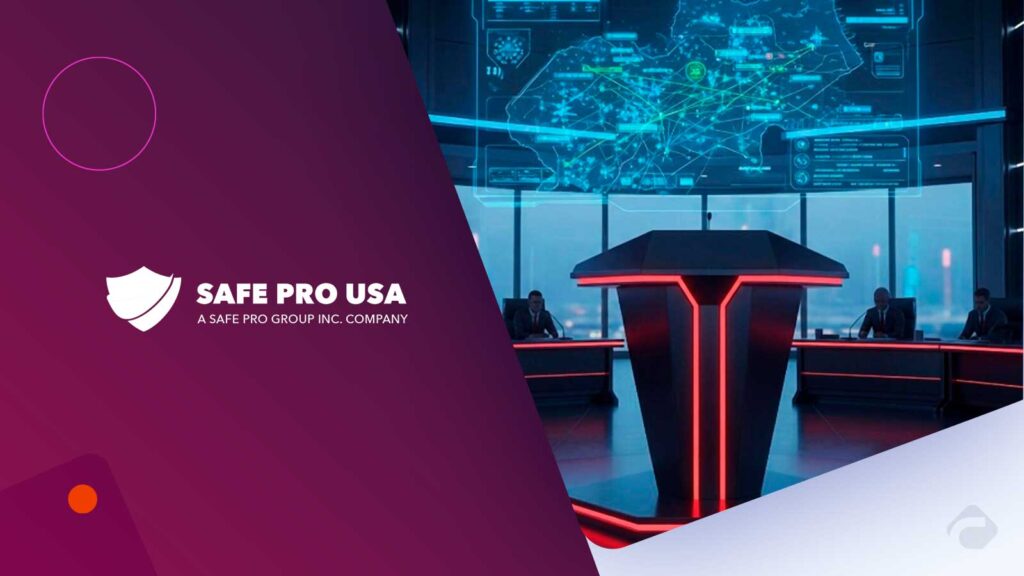Imagine the following scenario: you are in the middle of meetings, and you are going to have to meet your deadlines, get through compliance checks, and at the same time, you are mentoring junior staff. During all this, a thought comes to your mind: “Am I staying ahead of the new cyber threats? Do I have access to the right people?” For a large number of professionals and tech lovers, the best and the most reasonable way to say those questions is to be true is to join a cybersecurity association. The present guide will assist you in identifying which cybersecurity associations are worthy of your time, money, and attention. At the end, you will be familiar with the exact things to look for and how you can use your membership to get ahead of the others.
What Are Cybersecurity Associations?
Cybersecurity associations include professional or non-profit organizations that are made up of members who work in the field of information security. They are not mere bodies of qualifications – they are about getting new knowledge, making contacts, influencing standards, and giving professionals a feeling of being part of a sector that changes very fast. Surveyed cybersecurity leaders: 62% experience burnout at least once; 44% multiple times, according to Gartner.
Most common offerings include:
- Training and certifications.
- Webinars, working groups, and publications.
- Local and regional events of the chapter.
- Research reports and security frameworks.
- Quite a lot of things for standards and policy discussions.
The m in the context of people, technology, and politics would be a model of a connecting medium.
Why Membership Matters
There are tons of advantages one gets by being a member of a cybersecurity professional association, and this is just one of them. One of the main reasons to be a member of a cybersecurity association is the possibility of career growth, which is just a tiny benefit of the many we are going to look into.
Stay ahead of threats. The earliest versions of reports, advisories, and tools are only available to members. ISSA members can, for instance, get continuous learning sessions and security briefings alongside the reports.
Career growth. You can get engaged in several ways, and this includes the associations, opportunities such as certification, taking on a leadership role, and presenting at conferences have been documented to raise the career profile of the individuals.
In 2024, the global cybersecurity products & services market was ~US$200 billion, growing ~12.4% annually expected through 2027, as per Mckisney.
Networking. You’ll get to talk with your peers, people who can guide you through your career path, potential partners, and sometimes even stumble across the answers to questions you didn’t even think of.
Resource leverage. Membership-based organizations largely provide you with the most current policy templates, the latest threat intelligence sources, and the most recent industry journals. For instance, the National Cybersecurity Society offers members practical tools and weekly bulletins.
Advocacy. Large organizations have much sway over set standards and regulations, which is what enables your views to become part of the industry.
Major Cybersecurity Associations to Know
This is a brief overview of the prominent groups, the advantages conferred to members, and the criteria for whom they are ideal, no tables, just the story:
ISC²: Known for its globally recognized qualifications, such as CISSP and CCSP. It is a good fit for people who are looking for certified credentials, leadership in policy, or risk/governance.
“ISC² remains the profession’s most distinguished certification provider while charting a transformative path that is dedicated to fostering a dynamic and diverse cybersecurity community. As our community has surpassed the remarkable milestone of 500,000 members, current and future members remain at the heart of what we do and know that we are here to walk alongside them through every step of their careers.” – Clar Rosso, Ex- CEO of ISC².
ISACA: Concentrates on audit, risk, governance, and compliance. Certifications like CISA and CRISC are among the organization’s offerings. The best fit for the professionals in charge of governance, risk, and IT management.
“We have an extensive network of chapters throughout Europe in every country. Demand here is phenomenal, and the capability here is also phenomenal.” – Erik Prusch, CEO of ISACA.
ISSA (Information Systems Security Association): A strong local presence, conferences, and journals for the hands-on practitioners and those who want to build leadership or speaking experience.
Cloud Security Alliance (CSA): Focused on research and best practices for cloud security and assurance, and is most suitable for engineers and architects who are helping with cloud migrations. CSA has been a dedicated provider to the association.
Center for Internet Security (CIS): Originator of the CIS Controls and Benchmarks. Implementing CIS Controls and baselines, teams would find them helpful.
Women in Cybersecurity (WiCy) and other such focused groups: Professional mentoring, representation, and scholarships for the underrepresented field of professionals are provided. WiCy has also been forward in launching new ideas and ventures.
“Being a partner of WiCyS helps fill that really critical professional development piece for them, for individuals in their career, so that they’re not leaving the workforce, so they’re not leaving their company, so they’re staying tuned in to where the employer is investing in them.” – Lynn Dohm, Executive Director, WiCy.
Regional and local chapters: Though large associations have their local chapters as well, these are usually the ones that offer the most affordable and most accessible events and have the tightest communities.
How to Identify the Most Suitable Association for You
Since no single group can satisfy the needs of every individual, it is advisable to select an association based on certain criteria. Firstly, determine what kind of association you are looking for by relating the features to your personal goals. Secondly, weigh the costs versus the value that you will get from the association.
1. Define Your Goals
What would you ask if the answer were only one? Would it be about validation or certifications? Would you be in favor of broadly technical topics or compliance/risk policy? Is the main thing that networking brings to you? Is it writing, speaking, or leading that you want?
2. Consider Cost Versus Value
Event fees and membership dues are not the same. If your employer cannot afford it, make sure that you are receiving enough benefits, e.g., research, training discounts, professional credits, etc, for the money you paid.
3. Compare the Offerings
Firstly, the certifications and training should be in line with your working area. Secondly, include in the comparison research, newsletters, and threat intelligence. Thirdly, look at the availability of a local chapter. Fourthly, events, webinars, and conferences (online or in person).
4. Check Local Presence
The local meetings usually offer more accessibility and help build stronger relationships. You can’t judge a handshake for trust, but virtual events are pretty nice.
5. Fit with Your Domain
Being as non-flexible as it is, cybersecurity does not fit all. If you are one of(privacy, cloud, DevSecOps, or incident response) professionals, then go for that association that is the strongest in that sub-area.
According to McKinsey, 70% of companies say increased compliance with regulations causes their cybersecurity capabilities to mature.
Real-World Example
This is not purely a work of imagination – it is derived from a combination of true interviews.
A security manager for the middle part of her career in the financial services area opted for ISACA because of the CISA/CRISC credentials. With help from her chapter, she found out about a gadget that another member was employing to simplify compliance monitoring. Subsequently, she organized a panel on cloud risk, got the opportunity to present to the leadership, and eventually, at the regional conference, she was announced as a speaker. And all that came from just a few hours a month and one membership fee.
Common Misconceptions
“Only Executives Benefit”. The truth is that most associations have student and early-career membership categories.
“Membership is just dues and newsletters.” The real benefits come when you participate – attend, volunteer, or share.
“One group is enough.” Perhaps so. However, you may want to be a member of the one that is based on standards, and the other is for community or mentorship.
Recap and Next Steps
Key takeaways:
- Your decision on whether to join a professional association should be based on how much it will help you achieve your professional goals, be it through certification, domain knowledge, leadership skills, or networking.
- Weigh the expenses against the return on investment very carefully.
- Get involved with local chapters or join virtual events to get the most out of your membership.
- Don’t hesitate to have more than one membership to give you an edge over both broad and niche markets.
- Reevaluate your decisions regularly, especially as your career progresses.
Pro tip: When you have become a member, you may consider volunteering, taking full advantage of the resources at your disposal, and making the right kind of connections. Even though you might be somewhat limited, if your engagement is focused, it will yield a greater return.
FAQs
1. What is the main difference (ISC²)², ISACA, and ISSA?
(ISC)² gives prominence to globally acknowledged qualifications and security leadership. ISACA is concerned with audit, risk, and governance, whereas ISSA provides a comprehensive, practical community experience through local chapters and journals.
2. How much do memberships cost?
It ranges from a few tens to a few hundreds of dollars per year, depending on the association and the level of membership. Most of them have discounted rates for students and early-career professionals.
3. Do these associations help with certifications or facilitate continuing education credits?
Yes. They basically act as the organizations that provide or collaborate with the training providers to deliver workshops, webinars, and other types of certified training; besides that, they also facilitate the process of earning CPE credits required for the maintenance of credentials.
4. Can being active lead to career advancement?
Yes, of course. Taking part in activities such as speaking, writing, and leading committees increases your visibility among your peers as well as leaders, which is known to be the cause of opening up new doors.
5. Is membership worth it if I am short on time?
Yes – if you are strategic about it. Select no more than two associations that suit your aims best, participate in the main events, and avail yourself of their resources. The quality of your engagement is much more important than the quantity.
For deeper insights on agentic AI governance, identity controls, and real‑world breach data, visit Cyber Tech Insights.
To participate in upcoming interviews, please reach out to our CyberTech Media Room at sudipto@intentamplify.com.







